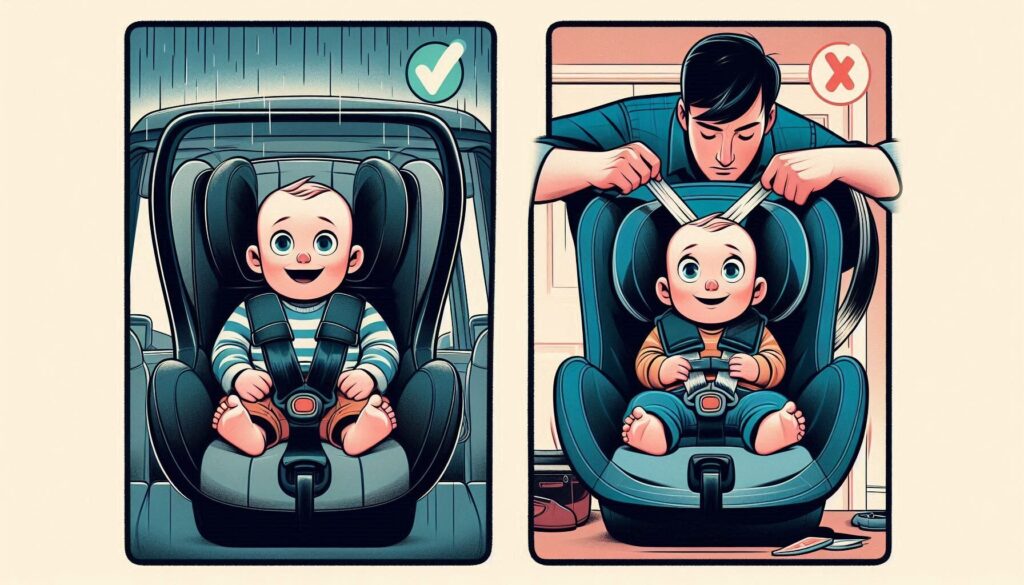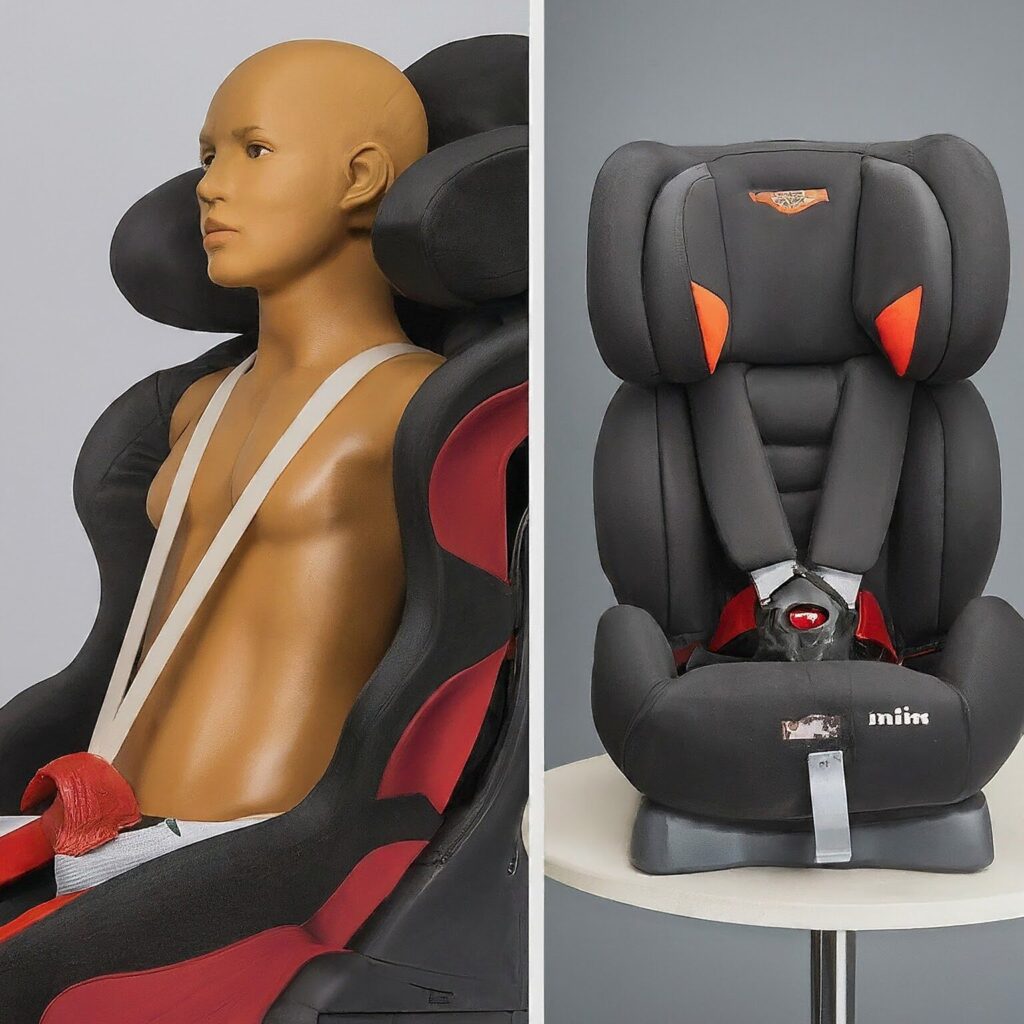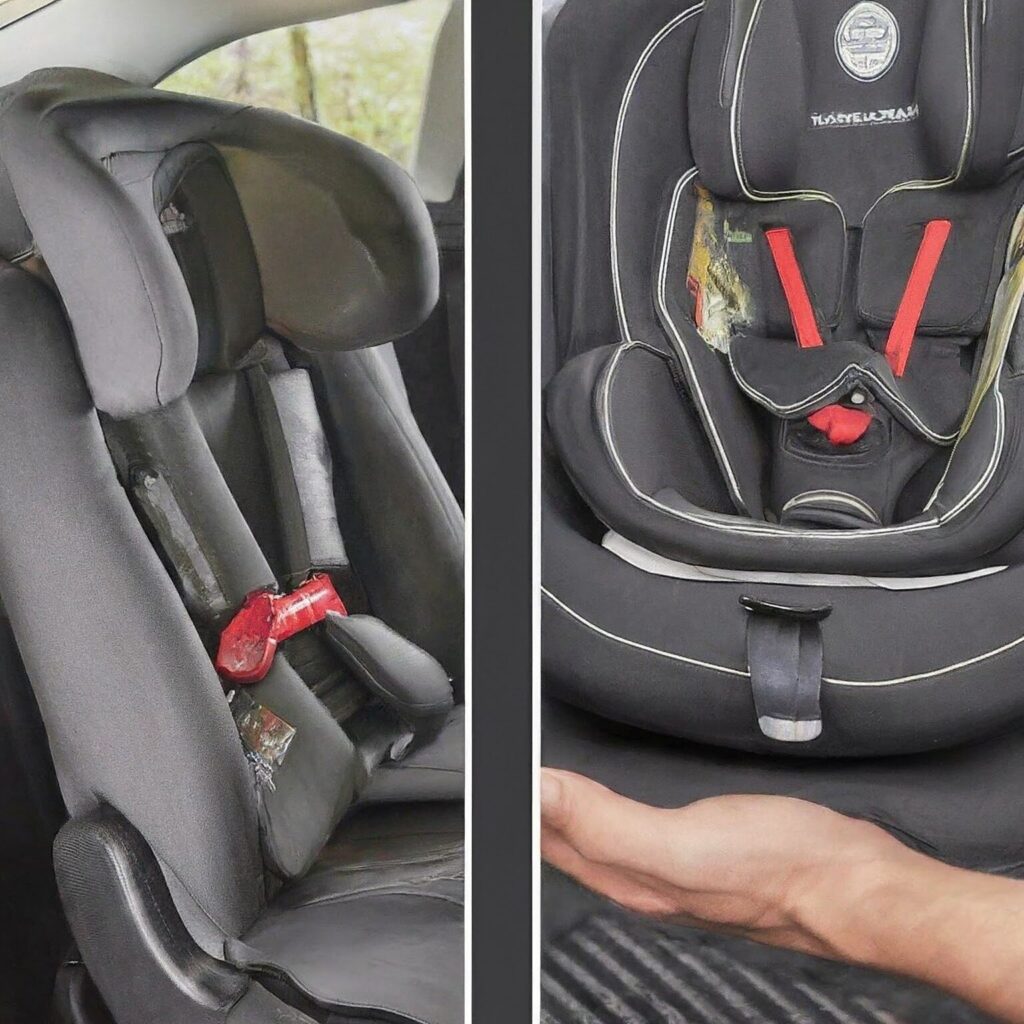13 Common Baby Car Seat Mistakes (Guaranteed Fix!) 2024

As a Certified Child Passenger Safety Technician (CPST), I see countless parents eager to keep their little ones safe on the road. Car seats are lifesavers, but even the best car seat can’t do its job if it’s not installed or used correctly. The truth is, many common mistakes parents make can compromise a child’s safety in a collision.
Car seats are a vital part of keeping your child safe on the road. However, with so many features and stages, navigating car seat safety can be confusing. Here, we’ll break down the top 13 car seat mistakes parents make and provide clear, actionable steps to ensure your child’s safe journey every time.
Why Are Car Seat Mistakes a Big Deal?
Car seats are designed to be the first line of defense for your child in a crash. They absorb impact, restrain your child, and prevent them from being thrown from the vehicle. Using a car seat correctly can reduce the risk of serious injury or death by up to 71%, according to the National Highway Traffic Safety Administration (NHTSA). However, a car seat used incorrectly can be more dangerous than no car seat at all.
Top 13 Car Seat Mistakes Parents Make
1. Front-Facing Too Early:
Many states allow forward-facing car seats as early as 1 year old. However, the American Academy of Pediatrics (AAP) strongly recommends keeping your child rear-facing for as long as possible, until they reach the maximum height or weight limit of their rear-facing car seat. This could be well past their first birthday!
Why? Imagine a crash. In a rear-facing car seat, your child’s entire body is cradled by the seat back, distributing the force of impact across their strong back and spine. Forward-facing seats only support the hips, leaving the delicate head and neck vulnerable to serious injury.
Worried about leg comfort? Don’t be! Children’s legs can bend comfortably at the knees, and a rear-facing position actually promotes proper spinal development.
Bonus Tip: Many convertible car seats allow rear-facing until your child reaches 40 pounds or more. Check your car seat manual for specific weight and height limits.
2. Low Chest Clip:
The chest clip plays a crucial role in keeping the harness straps snug against your child’s shoulders. A low chest clip allows the straps to loosen and become ineffective in a crash. Here’s the golden rule: the chest clip should be level with your child’s armpits.
Debunking Myths: You may hear concerns about the chest clip injuring your child. Here’s the truth:
- The chest clip is a positioning device, not a restraint. It may break or loosen during a crash, but that’s okay—it’s already done its job by keeping the straps tight.
- A low chest clip is far more dangerous than a broken one.
3. Missing Top Tether:
The top tether is an extra strap (usually found near the back of the car seat) that attaches to an anchor point in your vehicle. It’s crucial for forward-facing car seats as it prevents the seat from tipping forward in a crash, protecting your child’s head and neck.
Nearly 65% of parents skip the top tether! Make sure you use it for all forward-facing car seats with a harness. Your car seat manual will show you the proper attachment points in your vehicle. If you can’t locate the tether or manual, consult your car manufacturer or a CPST (Certified Child Passenger Safety Technician).
4. Not Checking for Outgrowing:
Car seat limits are based on weight, height, and torso height. While your child might not have reached the maximum weight or height yet, their torso could be too long for a secure rear-facing position.
Here’s the rule: When your child is rear-facing, make sure there’s at least one inch of space between their head and the top of the car seat shell. For forward-facing seats with a harness, their ears can be above the headrest, as long as the harness fits snugly across their shoulders and chest.
5. Incorrect Shoulder Strap Placement:

Proper harness fit hinges on shoulder strap placement. For rear-facing car seats, the straps should come from at or just below your child’s shoulders. Imagine a line drawn down from their shoulders. The harness straps should touch this imaginary line. For forward-facing car seats, the straps should come from just above their shoulders. Double-check placement every time you transition your child to a new car seat stage.
6. Latch System After Weight Limits:

The latch system, those lower connectors attaching your car seat to the vehicle, has a weight limit (usually around 65 lbs, including the car seat’s weight). Once your child reaches that limit, switch to the seat belt installation method. This may require using a lock-off clip for the lap belt to prevent it from becoming loose.
Tip: When unsure about weight limits, always opt for the seat belt installation method for maximum safety. Consult your car seat manual for specific instructions.
7. Excessive Seat Movement:
A properly installed car seat should move no more than one inch side-to-side when firmly tested at the belt path (where the lower anchors or seat belt connect to the car seat). If it moves more, the installation needs tightening. Here’s how to test for movement:
- Grasp the car seat at the base, near the belt path.
- Shake it from side-to-side with a firm tug.
- There should be no more than one inch of movement in any direction.
Consider a CPST (Certified Child Passenger Safety Technician): These experts can provide professional guidance and ensure your car seat is installed correctly. Many fire departments, hospitals, and children’s advocacy centers offer free car seat safety checks with CPSTs.
8. Puffy Coats in the Car Seat:
Those cozy winter coats compress in a crash, creating slack in the harness. This can leave your child inadequately secured. Here’s how to keep your child warm safely:
- Dress them in thin layers. This allows for easier temperature regulation and avoids bulky clothing under the harness.
- Use a car seat-safe poncho or blanket after the car warms up. Once the car interior reaches a comfortable temperature, you can drape a certified car seat-safe blanket over your child for warmth.
- Look for a car seat with a removable winter insert. Some car seat models have inserts specifically designed for winter use that are thin and won’t interfere with harness fit.
9. Using Unapproved Aftermarket Products:
Skip the cute headrests, strap padding, and other aftermarket products not approved by your car seat manufacturer. These products haven’t undergone crash testing and could interfere with the proper functioning of your car seat. The best way to ensure your child’s safety is to use the car seat and harness system exactly as designed by the manufacturer.
10. Skipping the Booster Seat Too Early:
Many parents mistakenly believe their child is ready for the regular seat belt once they outgrow their harnessed car seat. However, children under 4’9″ are still too small for the adult seat belt to fit properly. A booster seat positions the seat belt across their strong hips and shoulders, providing optimal protection in a crash.
The 5-Step Test: Use this simple test to determine if your child is ready for the regular seat belt without a booster:
- Can your child sit back comfortably with their entire back against the seat?
- Do their knees bend comfortably at the edge of the seat?
- Does the seat belt sit across the mid-chest, not on their stomach?
- Does the shoulder belt rest across the middle of their shoulder, not on their neck or arm?
- Can they stay seated in this position for the entire ride?
Remember: Most children won’t pass this test until they are around 10–12 years old.
11. Forgetting About Expired Car Seats:
Car seats, like most safety equipment, have expiration dates. Using an expired car seat compromises its safety features and effectiveness in a crash. Check your car seat manual or the manufacturer’s website to locate the expiration date, typically stamped on the car seat itself.
12. Not Practicing Safe Habits Every Time:
Car seat safety goes beyond proper installation and choosing the right seat. Here are some additional practices to make every journey safer:
- Never leave your child unattended in a car seat outside the vehicle.
- Always lock the car doors to prevent accidental exits.
- Set a reminder on your phone to double-check harness tightness before each trip.
- Lead by example and buckle yourself up every time you get in the car.
13. Register Your Car Seat!
Registering your car seat with the manufacturer allows them to notify you of any safety recalls or important updates. You can usually find the registration information on a sticker on the car seat itself, or on the manufacturer’s website. This way, you can be sure your child’s car seat is functioning at its safest potential.
By avoiding these common mistakes and following safe car seat practices, you can ensure your child has the best possible protection while traveling.
Additional Resources:
- National Highway Traffic Safety Administration (NHTSA):
- Safe Kids Worldwide:
- Your local fire department or pediatrician’s office may also offer car seat safety checks.
We hope this information empowers you to make informed decisions and keep your little one safe on every journey!
